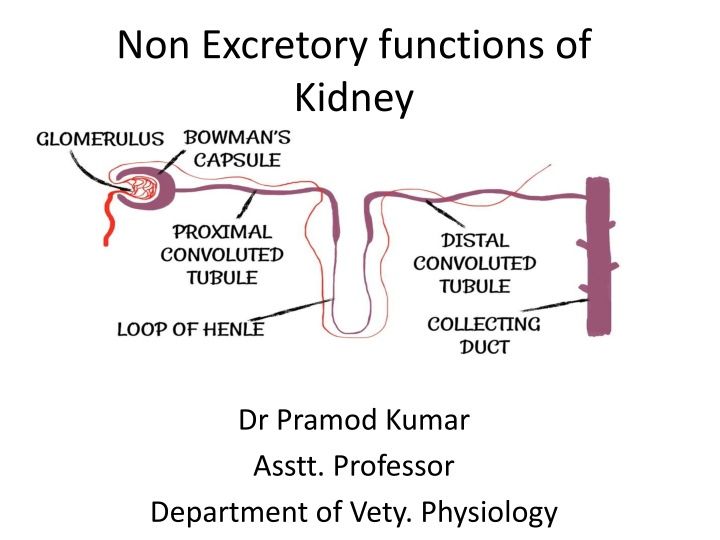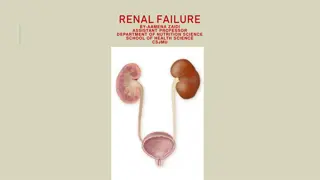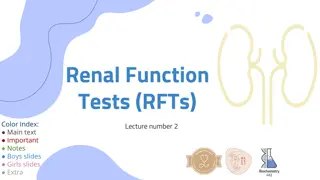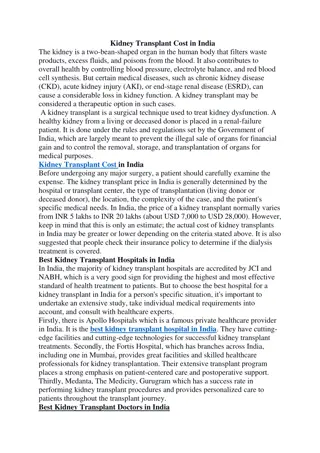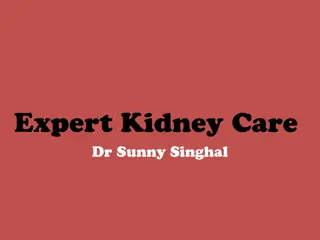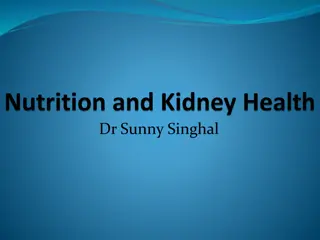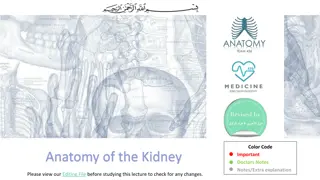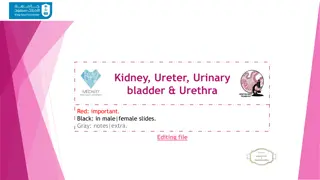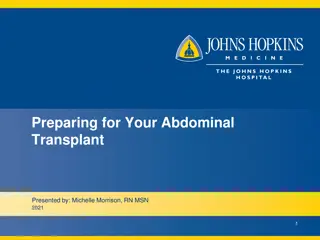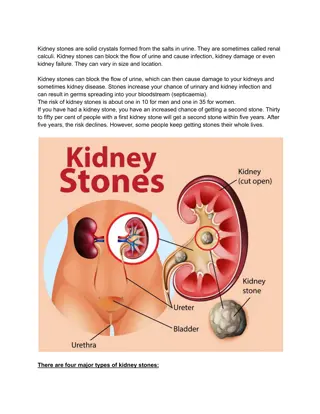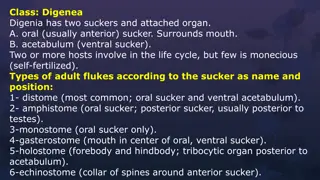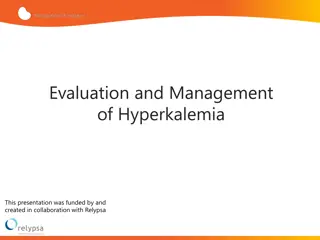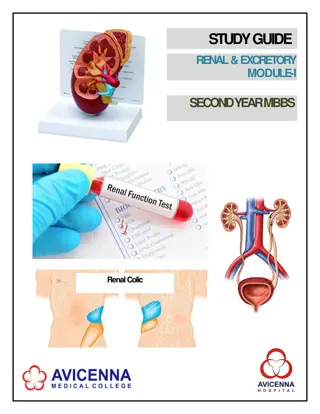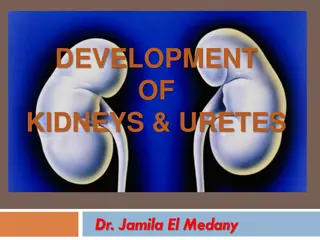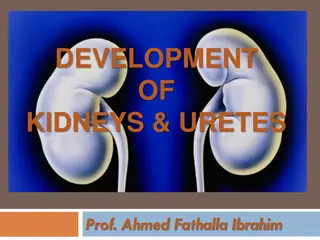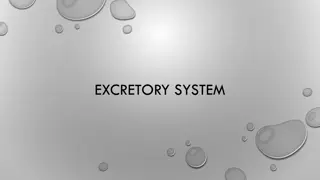Non-Excretory Functions of Kidney: Structural Insights
Explore the intricate structural details of the kidney, including the nephron, filtration system, and tubules. Learn about the non-excretory functions like hormone secretion and erythropoietin regulation within this vital organ.
Download Presentation

Please find below an Image/Link to download the presentation.
The content on the website is provided AS IS for your information and personal use only. It may not be sold, licensed, or shared on other websites without obtaining consent from the author.If you encounter any issues during the download, it is possible that the publisher has removed the file from their server.
You are allowed to download the files provided on this website for personal or commercial use, subject to the condition that they are used lawfully. All files are the property of their respective owners.
The content on the website is provided AS IS for your information and personal use only. It may not be sold, licensed, or shared on other websites without obtaining consent from the author.
E N D
Presentation Transcript
Non Excretory functions of Kidney Dr Pramod Kumar Asstt. Professor Department of Vety. Physiology
INTRODUCTION Gross structure of Kidney Bean shaped Hilus layers (outer cortex and inner medulla)
Nephron Structural and functional unit of the kidneys Each kidney has 1 million nephrons Each nephron is about 5 cm long Total length of nephrons is about 100 kms
Filtration surface composed of the loops of the capillaries Arises from the afferent arteriole of each nephron Glomerular capsule is the bowman s capsule Glomerulus and the Bowman s capsule together called the malpighian body Endothelial wall shows fenestrations of 40-100nm in dia. prevents the large molecules to escape into the filtrate after reabsorption and secretion, fluid becomes urine.
Proximal convoluted tubules first portion of the tubule lined by the cells, look like truncated pyramids large no of microvilli to filtrate by active transport absorbs 2/3 of the glomerular filtrate.
loop of Henle PCT narrows abruptly to continue loop of Henle majority of nephrons originate in the cortex the loops of Henle are short the nephrons, originate in the junction of cortex and medulla have long loops of henle.
Distal convoluted tubules metabolic activity is moderate reabsorbs less than 15% of the filtrate poor permeability reabsorbs against high electrochemical gradients Important part in final composition of the urine macula densa is the small part of the DCT near the afferent areteriole
Collecting ducts proximal part of collecting tubules are very similar to the distal part of the distal tubule become columnar and less mitochondria are present less hormone mediated reabsorption of the filtrate.
Non excretory function Secretion of hormones Secretion of erythropoietin Secretion of renin Secretion of the active form of vitamin D (calcitriol) and prostaglandins.
Gluconeogenesis Kidney produces glucose from lactate, glycerol and glutamine. responsible for gluconeogenesis in fasting condition. Regulates glucose production through insulin catecholamines and other hormones. Renal gluconeogenesis takes place in the renal cortex.
Homeostasis homeostatic control through renal excretion action of ADH and ANP abnormal excretion of Na imply glomerular dysfunction. Urinary excretion rate = Filtration rate Reabsorption rate + Secretion rate
Steps for formation of urine Filtration Reabsorption Indirect reabsorption Bicarbonate Hormones Secretion
Filtration blood is filtered by nephrons ultrafiltration enter Bowman's space. filtration is driven by Starling forces to form urine.
Reabsorption are removed from the tubular fluid and transported into the blood. It is the process by which solutes and water Reabsorption - once absorbed in the intestines Two step process active or passive extraction transport processes - Starling forces
Indirect reabsorption H+ combines with HCO3 to form carbonic acid (H2CO3) Luminal converts H2CO3 into H2O and CO2 carbonic anhydrase enzymatically CO2 freely diffuses into the cell Cytoplasmic carbonic anhydrase converts the CO2 and H2O into H2CO3 H2CO3 readily dissociates into H+ and HCO3
Hormones regulates water reabsorption are: aldosterone - stimulate active Na reabsorption ADH - stimulates passive water reabsorption Both hormones exert their effects on the collecting ducts Secretion - Tubular secretion is the transfer of materials from peritubular capillaries to renal tubular lumen. Active transport - only few substances are secreted those are present in great excess or natural poisons. Many drugs are eliminated by tubular secretion
